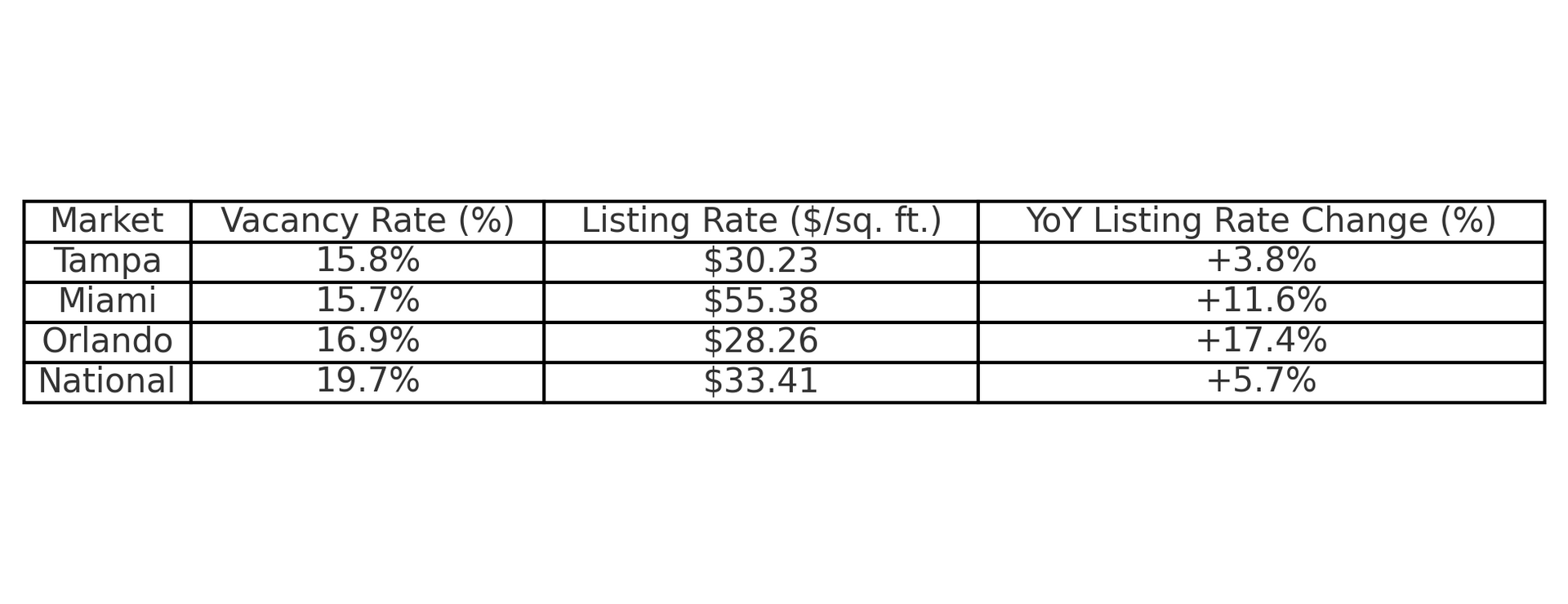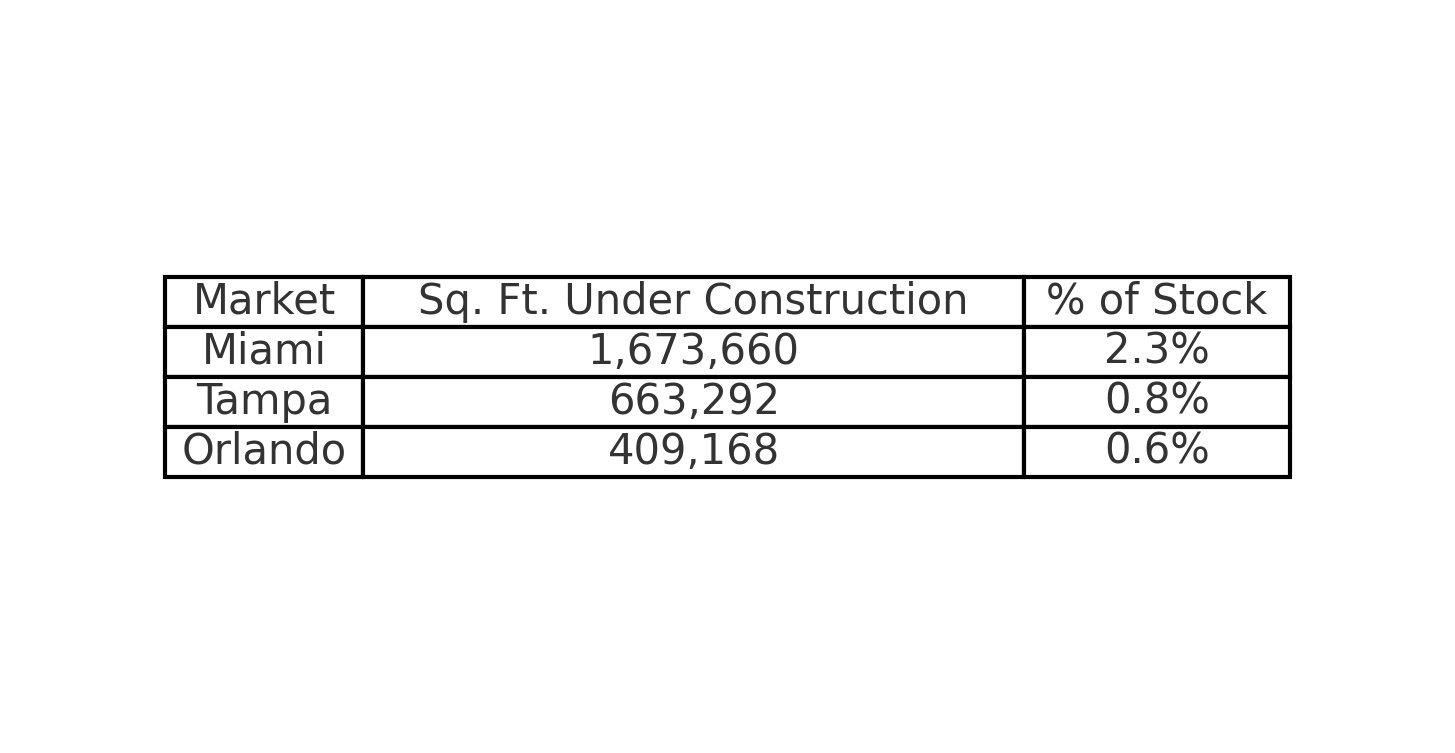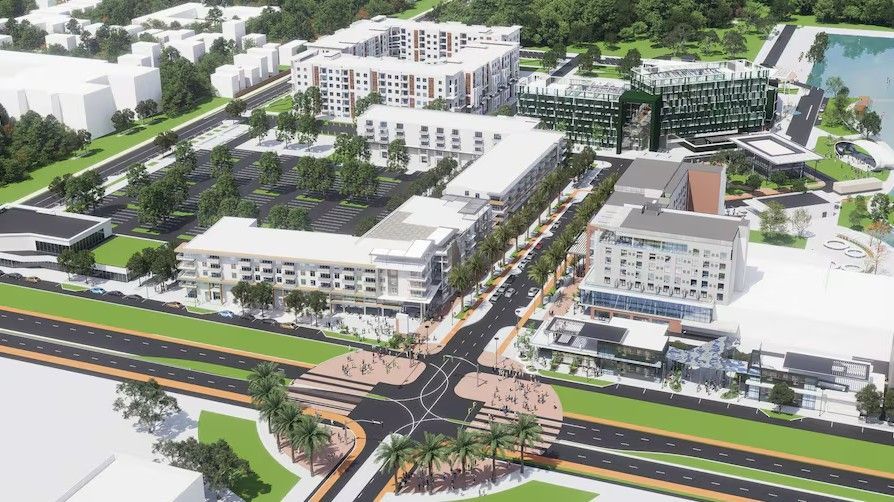Tampa Bay’s Office Market in 2025: Rising Vacancies, Growing Coworking Spaces, and Investor Confidence
The office market in Tampa Bay continues to evolve, reflecting national trends of rising vacancy rates, shifting work preferences, and the growing appeal of coworking spaces. While challenges persist, opportunities abound for businesses and investors adapting to these market shifts.
Vacancy Rates and Rental Prices: A Mixed Outlook
As of early 2025, Tampa’s office vacancy rate stands at 15.8%, reflecting a 260-basis point increase over the past year. This increase is aligned with national trends, where companies continue to adjust their office footprints in response to hybrid and remote work models.
Despite the rise in vacancies, listing rates in Tampa have increased by 3.8% year-over-year, reaching $30.23 per square foot. This signals strong demand for high-quality spaces, even as older properties struggle to attract tenants.

While Tampa’s office vacancy rate remains lower than the national average, the market must navigate increasing supply and shifting work trends to maintain healthy occupancy levels.
Coworking Spaces: A Growing Trend
One of the most notable trends in the Tampa Bay office market is the continued expansion of coworking spaces. Nationally, coworking locations increased by 25% year-over-year, with the Southeast leading the charge at 1,960 locations. This reflects a growing demand for flexible work environments that offer a balance between traditional office spaces and remote work.
Key Coworking Growth Metrics in the Southeast
- Number of coworking locations: 1,960 (up 24.2% YoY)
- Total square footage: 33.3 million (up 18% YoY)
- Coworking as a % of total office space: 2.0% (up 30 basis points YoY)
Tampa Bay, with its thriving small business ecosystem and influx of remote workers, is well-positioned to benefit from this shift toward flexible office solutions.
Office Construction Pipeline: Limited New Supply
New office construction in Tampa remains relatively modest compared to other major Florida markets. Currently, 663,292 square feet of office space is under construction in Tampa, representing 0.8% of total office inventory. This is lower than Miami (1.67 million sq. ft.) but slightly ahead of Orlando (409,168 sq. ft.).

The slowdown in office construction aligns with national trends, as rising vacancies and economic uncertainty deter speculative development. For landlords and investors, this could create opportunities for repurposing or upgrading existing properties.
Tampa’s Office Sales Market: Investor Activity Remains Strong
Despite rising vacancies, Tampa’s office market remains attractive to investors. In early 2025, $145 million worth of office transactions were recorded, with an average price of $236 per square foot—one of the highest in Florida.

Tampa’s strong pricing reflects investor confidence in the market’s long-term potential, particularly for well-located Class A properties.
Final Thoughts: Where is Tampa’s Office Market Headed?
The Tampa Bay office market in 2025 is facing both challenges and opportunities. While vacancies are rising, coworking spaces are thriving, and investor activity remains strong. The city's appeal as a business-friendly destination, combined with a growing population, suggests that well-positioned office properties will continue to perform well.
For businesses and investors, strategic adaptation will be key. Owners should consider upgrading office spaces, exploring flexible leasing options, and capitalizing on Tampa’s strong market fundamentals to navigate these shifting trends.

Thank you for your interest. Have questions regarding the local market? Navigate the Real Estate Market with confidence, and contact us at Cliggitt Valuation for your appraisal, consulting, and valuation needs today.
Mike Cliggitt, MAI, MRICS, CCIM
813.405.1705 | 863.661.1165 - Direct Lines
findvalue@cliggitt.com
Appraisal & Valuation Markets
Questions about our blog? Contact our Director of Sales & Marketing, Sydney Avolt.
Sydney Avolt
727.403.7418 - Direct Line
SHARE CONTENT





